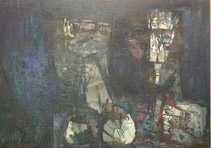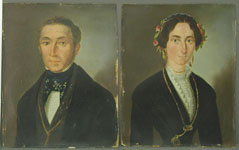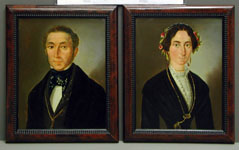|
|
To varnish or not to varnish - that’s the questionThe varnish – a type of coating (lacquer) is used to protect oil paintings and paintings in other techniques. Almost no one who would envisage hanging an aquarelle painting in their home without accommodating it safely behind glass; but for some reason, when an oil painting is the subject of discussion, many people have reservations or tend to fear protecting it in a similar way. The well-known American painter Georgia O’Keefe, was forced to instruct the museums that held her oil paintings - whose velvety matte texture had been created by the use of very dry colors with a very little oil to bind the pigments, and of course without varnish - to coat them with varnish, because they had simply begun to disintegrate.   The idiom ‘more is better’ does not apply to the issue of varnish. A protective layer is supposed to be uniform and thin, because if not, tension is created across the surface of the painting and the natural fissuring rate of the paint and the varnish is accelerated. The varnish should be renewed from time to time. The accepted view recommends that after ten to thirty years, the painting should be delivered to an art restorer, who will remove the old layer that has meanwhile absorbed the contaminating materials. It is reasonable to assume that the painting has darkened, yellowed and cracked, and the restorer will recoat the painting with a new protective coating. The optimal period of time between one conservative treatment and another varies so widely (between 10 to 30 years) because there are different factors that influence the rate of deterioration, such as the level of air pollution, level of ultra-violet radiation, manner of cleaning etc.   The ethical principles of conservation and restoration aim inter alia to restore the creative work as close as possible to its original state, at the time when the artist created it. This point is very important, because this is exactly what professional cleaning and coating is able to do. When the artist completes the work, the ‘satiated’ colors are vibrant and clean. Often, with time, the colors fade, absorb dust, yellow, and become very dark. Cautious but thorough cleaning, and proper coating can definitely wind the wheels of time backwards and of course slow down the deterioration process. The correct time for the initial coating of an oil painting is approximately half a year to a year from the moment when the painting was completed, according to the depth and number of paint layers. Another method to determine the correct date is by smelling the work, the moment when the characteristic smell of linseed oil is significantly weakened, is the time to varnish! First published in the journal “Auction”, Issue 21. Updated and extended in April 2008. © All rights reserved to Michael Karov Karo, Karo Arts Back to articles |
|
Karo-Arts.com © 2008 | דף הבית - קארו אמנויות
|

